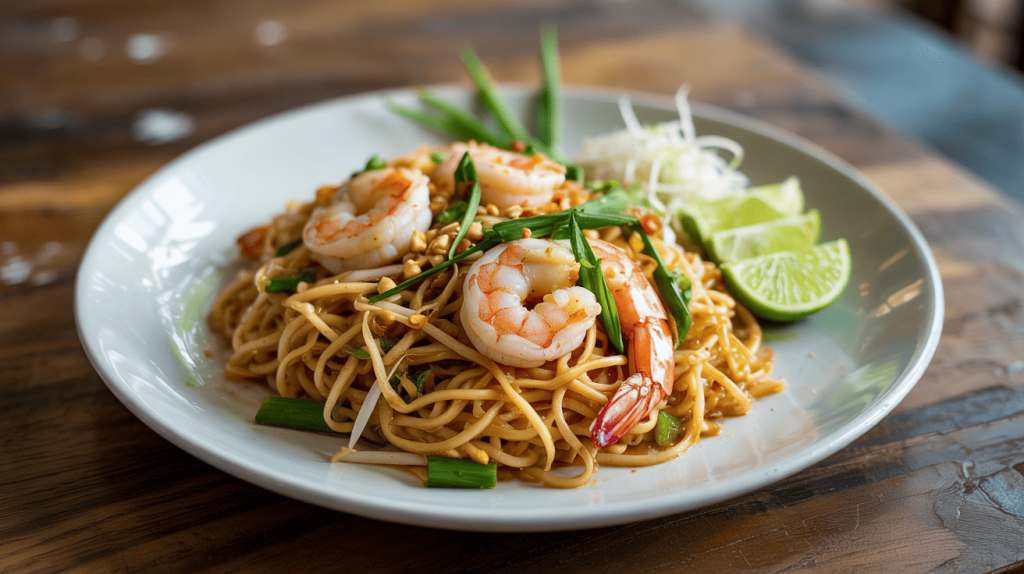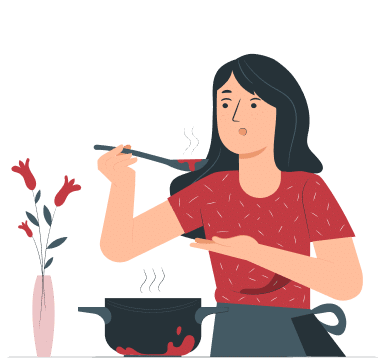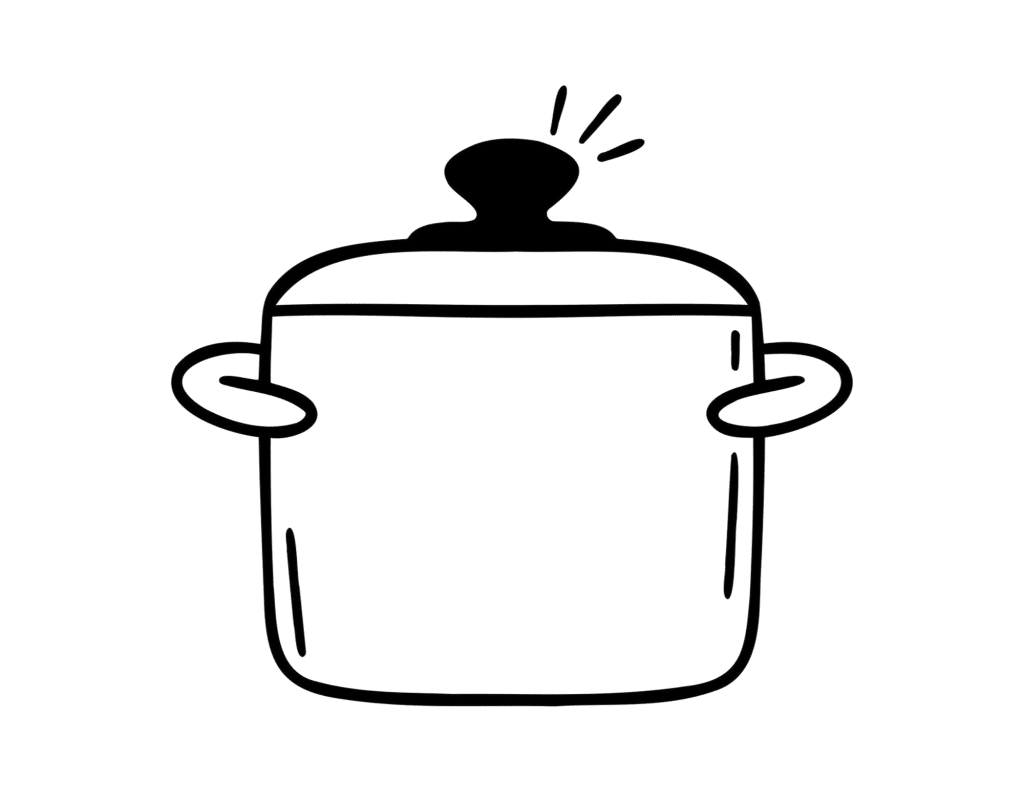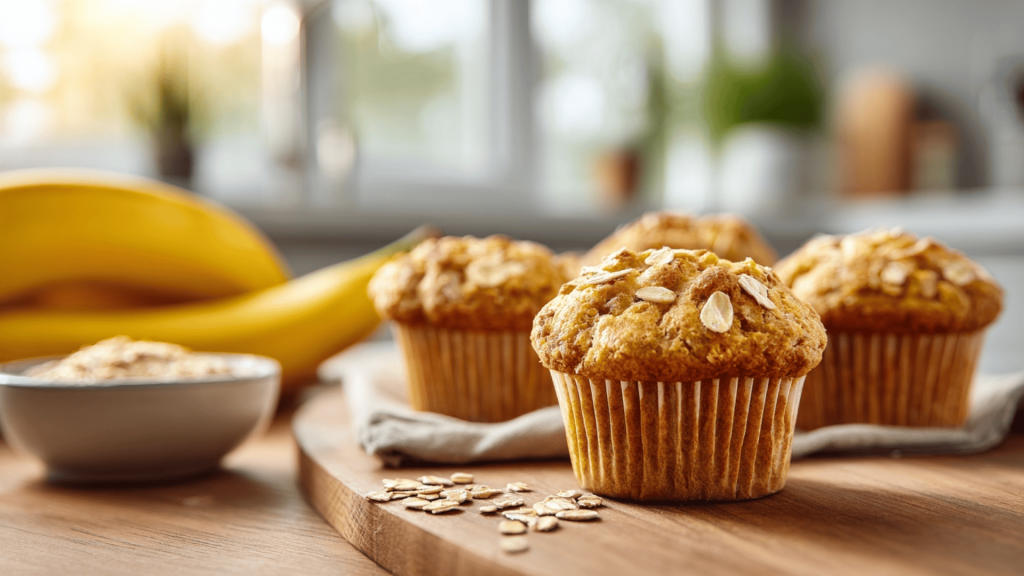Is Pad Thai gluten-free? This is one of the most common questions people ask when they’re trying to avoid gluten but still want to enjoy their favorite Thai food.
Pad Thai looks simple with its rice noodles, eggs, and peanuts, but the answer isn’t as straightforward as you might think.
While the main ingredients seem safe, gluten can hide in surprising places like sauces, seasonings, and cooking methods.
However, with the right knowledge and preparation, you can absolutely enjoy delicious and safe Pad Thai. Let’s find out everything you need to know about making this popular dish gluten-free and delicious
What’s Typically in Pad Thai?
Pad Thai looks like a simple dish with basic ingredients. The main parts include rice noodles, scrambled eggs, and protein like tofu or shrimp.
The sauce is usually made from tamarind paste, which gives it that sweet and sour taste. Most dishes also have crushed peanuts on top for crunch. These ingredients seem safe for people who can’t eat gluten.
However, there’s a catch. The sauces and toppings can change a lot between different restaurants and cooks. What looks gluten-free on the surface might actually contain hidden gluten in the seasonings or preparation methods.
Are Pad Thai Noodles Gluten Free?
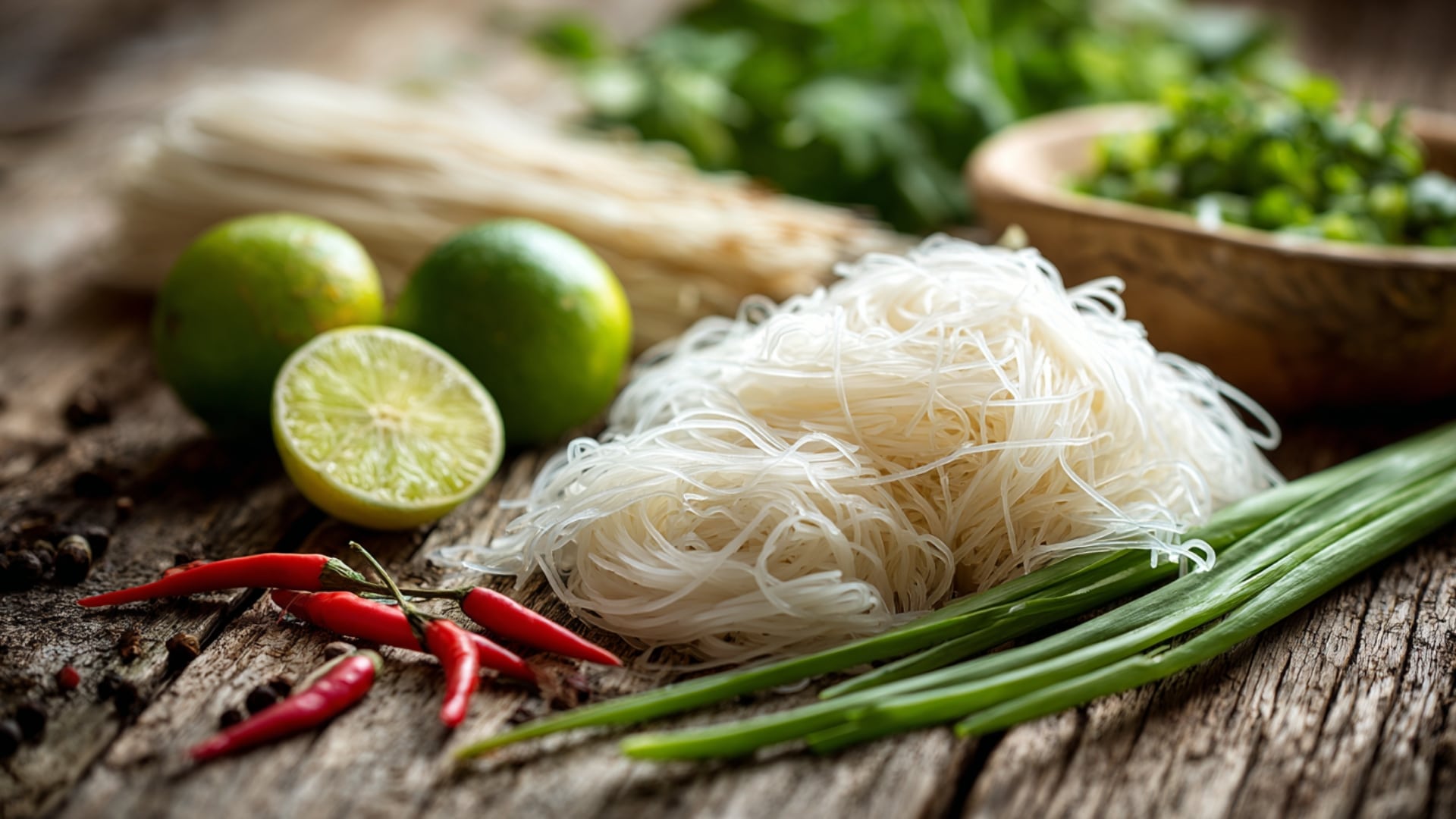
The good news is that most Pad Thai uses rice noodles, which are naturally gluten-free. Rice noodles are made from rice flour and water, so they don’t contain wheat, barley, or rye.
You can usually find safe dried rice noodles at grocery stores. However, be cautious when purchasing fresh noodles from Thai restaurants or Asian markets. Some fresh noodles might have wheat flour added to make them stronger or change their texture.
Always ask about the ingredients if you’re eating out. When buying noodles at the store, check the label to make sure it only lists rice flour and water as the main ingredients.
Where Gluten Sneaks In: Sauces, Add-ins, and Cooking Methods
Although Pad Thai may seem safe, gluten can hide in places you might not expect. These often-overlooked sources of gluten are sneaky, even to experienced cooks. Here are the main problem areas to watch out for:
- Soy Sauce – Most contain wheat, even though they’re soy-based.
- Oyster Sauce and Hoisin Sauce – Often have wheat thickeners.
- Shared Cooking Pans – Same woks used for gluten-containing dishes.
- Crispy Toppings – Fried garlic or tofu may be flour-coated.
- Pre-Made Sauce Mixes – Store-bought Pad Thai sauces can have hidden wheat.
The safest approach is to ask detailed questions about ingredients and cooking methods when dining out. At home, use certified gluten-free versions of these sauces and seasonings.
Pad Thai Variations: Are All Versions Gluten Free?
Different types of Pad Thai have different gluten risks. Some versions are safer than others, depending on where you eat and what ingredients are used.
Understanding these differences can help you make better choices when ordering or cooking.
| PAD THAI TYPE | GLUTEN RISK | MAIN CONCERNS |
|---|---|---|
| Restaurant Pad Thai | High | Soy sauce, oyster sauce, and shared cooking equipment |
| Street Food Pad Thai | Medium-High | Fresh noodles may contain wheat and unknown sauce ingredients |
| Vegan Pad Thai | Medium | Often uses regular soy sauce instead of gluten-free versions |
| Fusion/Western-style | High | Non-traditional sauces like sriracha, extra seasonings with gluten |
| Homemade Pad Thai | Low | You control all ingredients and can choose gluten-free options |
The safest option is making Pad Thai at home, where you can pick every ingredient. When eating out, always ask about the sauces and cooking methods used.
Don’t be afraid to speak up about your dietary needs – most restaurants want to help keep you safe.
How to Order Gluten-Free Pad Thai at Restaurants
Ordering gluten-free Pad Thai at restaurants takes some planning, but it’s totally possible. Start by asking clear questions like “Are your noodles 100% rice-based?” and “Do you use tamari instead of regular soy sauce?”
Tell your server that you have a gluten sensitivity and need to avoid wheat completely. Many staff members understand this better than you might think. Look out for red flags on menus like dishes described as “crispy” or “fried,” which often use flour.
Also watch for words like “teriyaki” or “hoisin” in the description. Don’t hesitate to ask to speak with the kitchen staff if your server appears uncertain about the ingredients.
How to Make Gluten-Free Pad Thai at Home
Making Pad Thai at home is the best way to ensure it’s completely gluten-free. You control every ingredient and can avoid all the hidden sources of gluten.
Plus, it’s easier than you might think and tastes just as good as restaurant versions.
Gluten-Free Pad Thai Ingredients
Here’s everything you need to make safe, delicious Pad Thai at home. Always check labels to make sure each ingredient is certified gluten-free.
| TYPE | INGREDIENTS |
|---|---|
| Noodles | Rice noodles (100% rice flour) |
| Protein | Chicken, shrimp, tofu, or egg |
| Sauce | Tamari, fish sauce (GF), lime juice, sugar |
| Veggies | Garlic, green onion, bean sprouts |
| Optional | Carrots, chili flakes, crushed peanuts |
With these simple ingredients, you can create restaurant-quality Pad Thai that’s completely safe for gluten-free diets. Most of these items are readily available at regular grocery stores.
1. Cook the Noodles
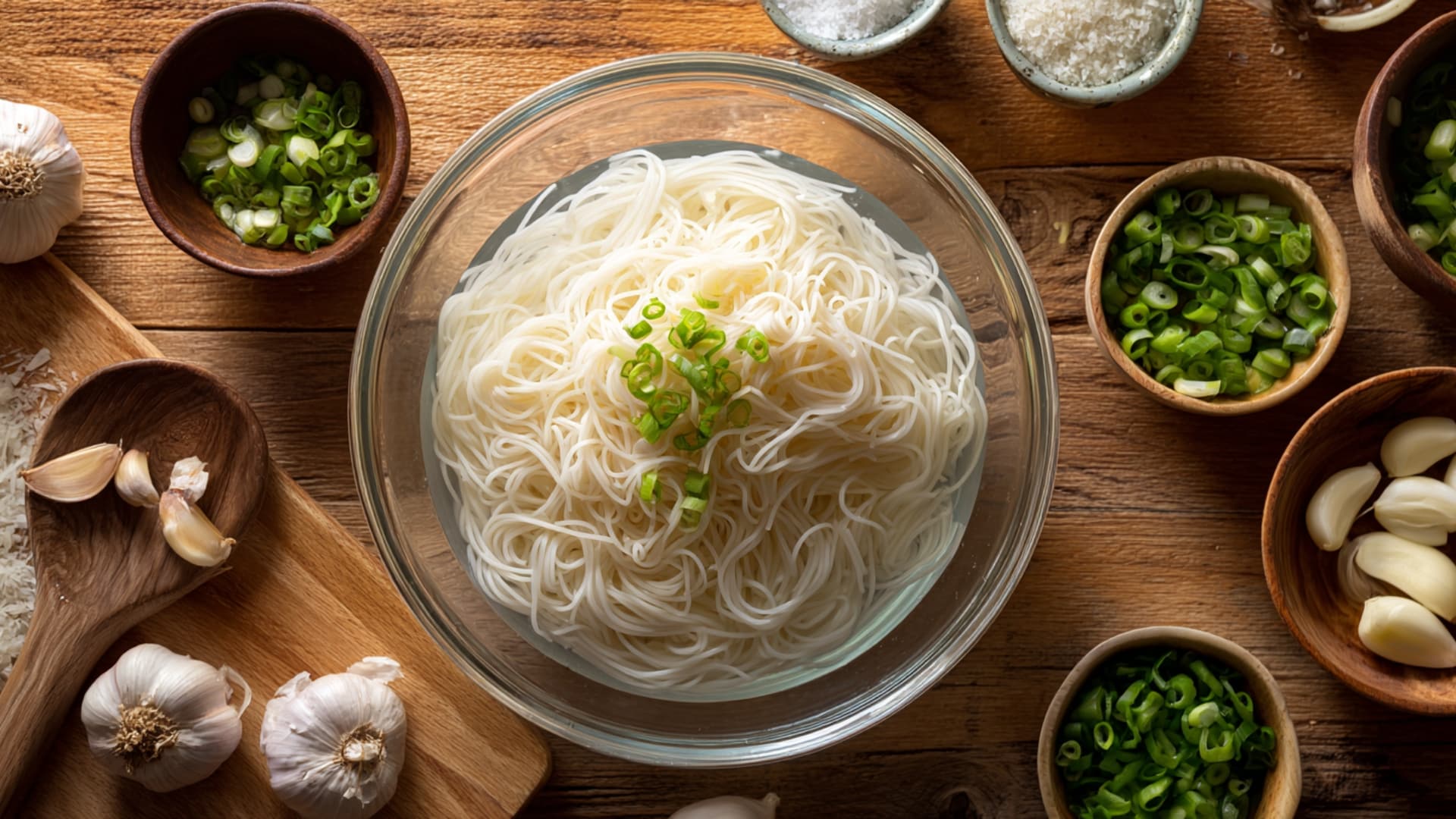
Start by soaking your rice noodles in warm water for about 20 to 30 minutes. They should become soft and bendable, yet retain some firmness. Don’t let them get mushy because they’ll cook more in the pan later.
Drain the water completely before using the noodles in your dish.
2. Make the Sauce
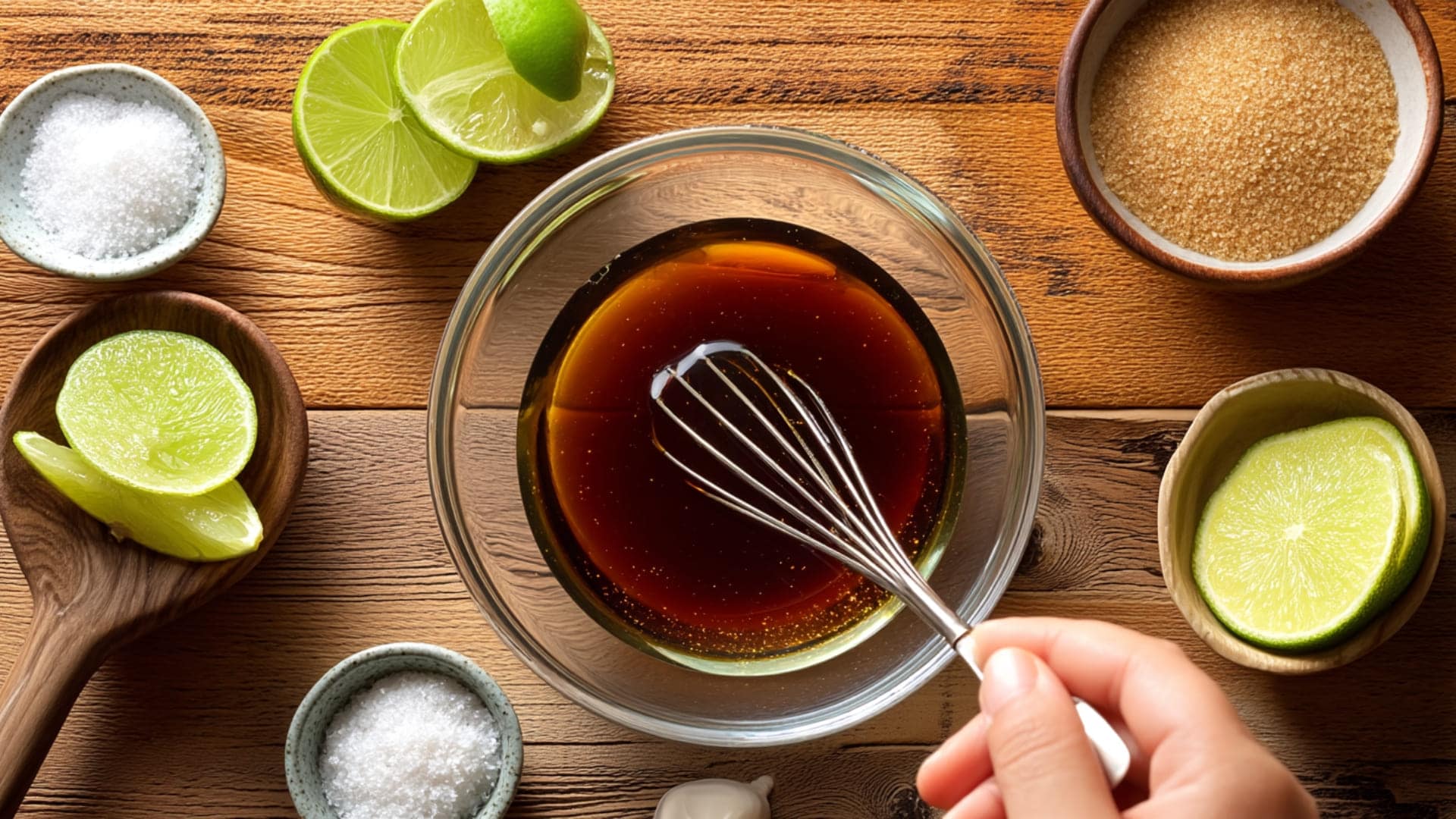
Mix tamari, fish sauce, lime juice, and sugar in a small bowl. Tamari is the gluten-free version of soy sauce; therefore, use it instead of regular soy sauce. Stir everything together until the sugar completely dissolves.
This sweet and salty sauce is what gives Pad Thai its famous flavor.
3. Cook the Protein
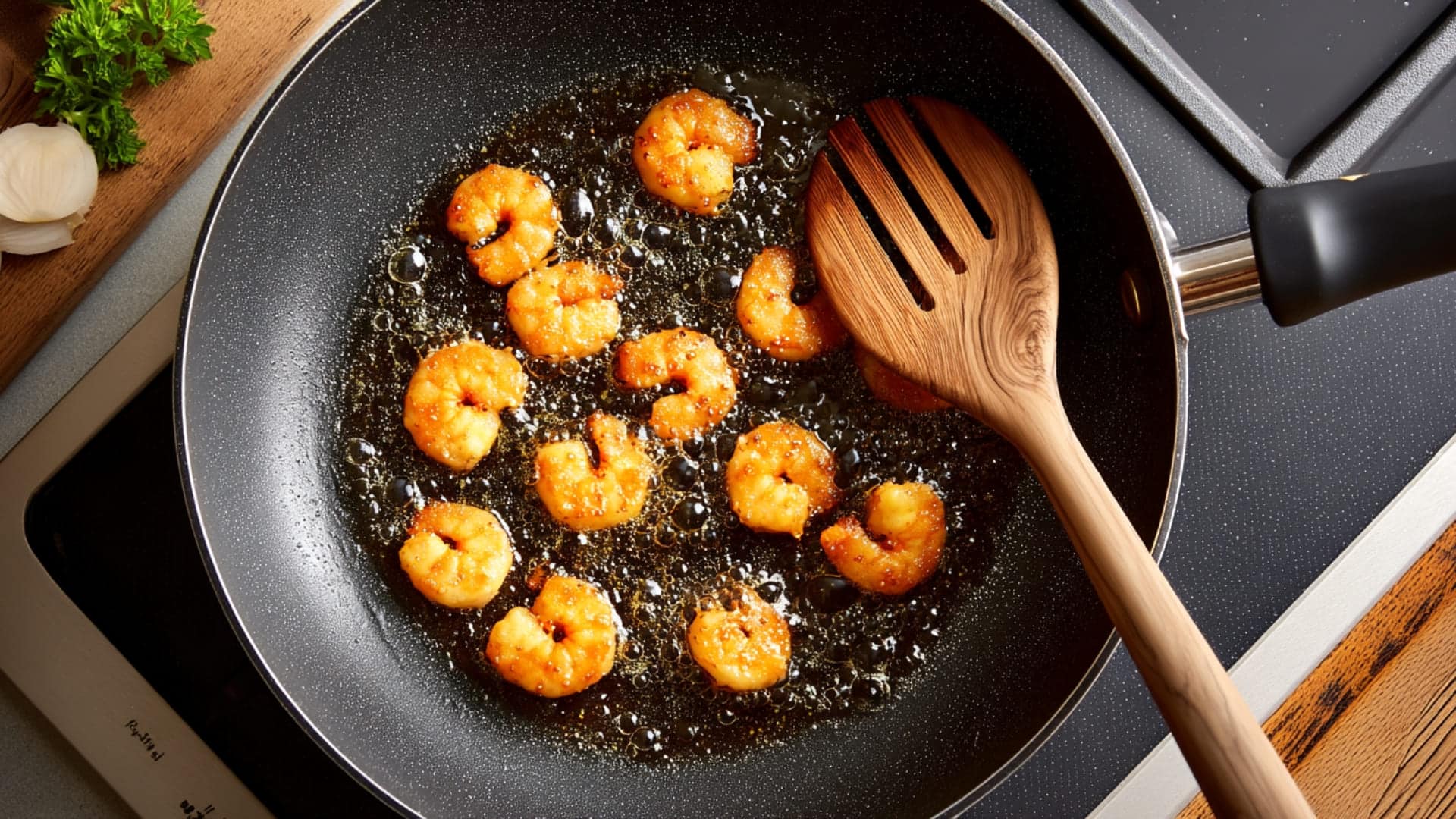
Heat some oil in a large pan or wok over medium-high heat. Add your chosen protein, such as shrimp, chicken, or tofu, and cook it thoroughly. Make sure it’s fully done before moving to the next step.
Remove the cooked protein from the pan and set it aside on a plate for now.
4. Sauté Aromatics & Combine
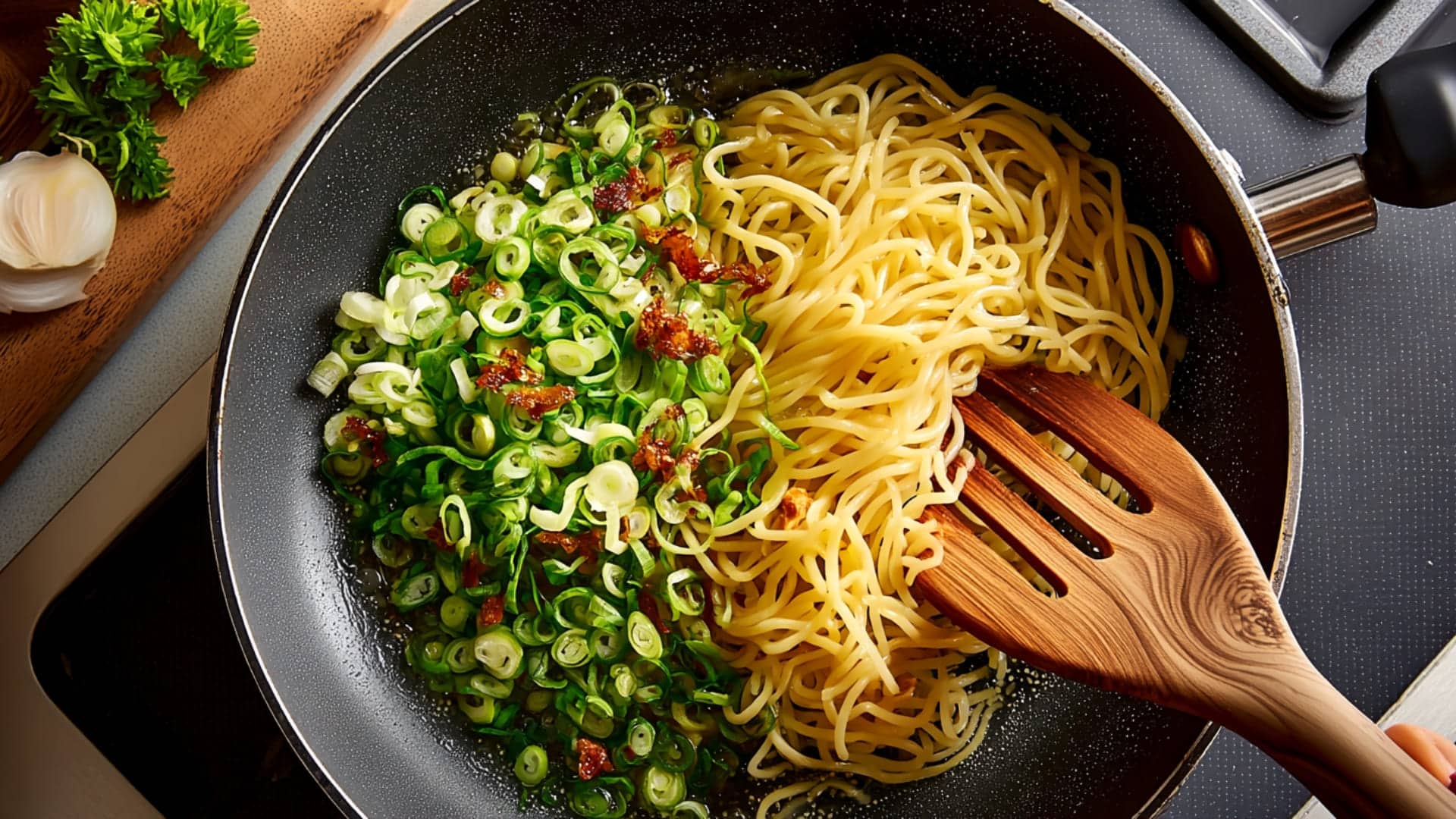
Add chopped garlic and green onions to the same pan. Cook them for about 30 seconds until they smell good. Then add your drained noodles, the sauce you made, and the cooked protein back to the pan.
Toss everything together quickly for 2 to 3 minutes until heated through.
5. Serve and Top
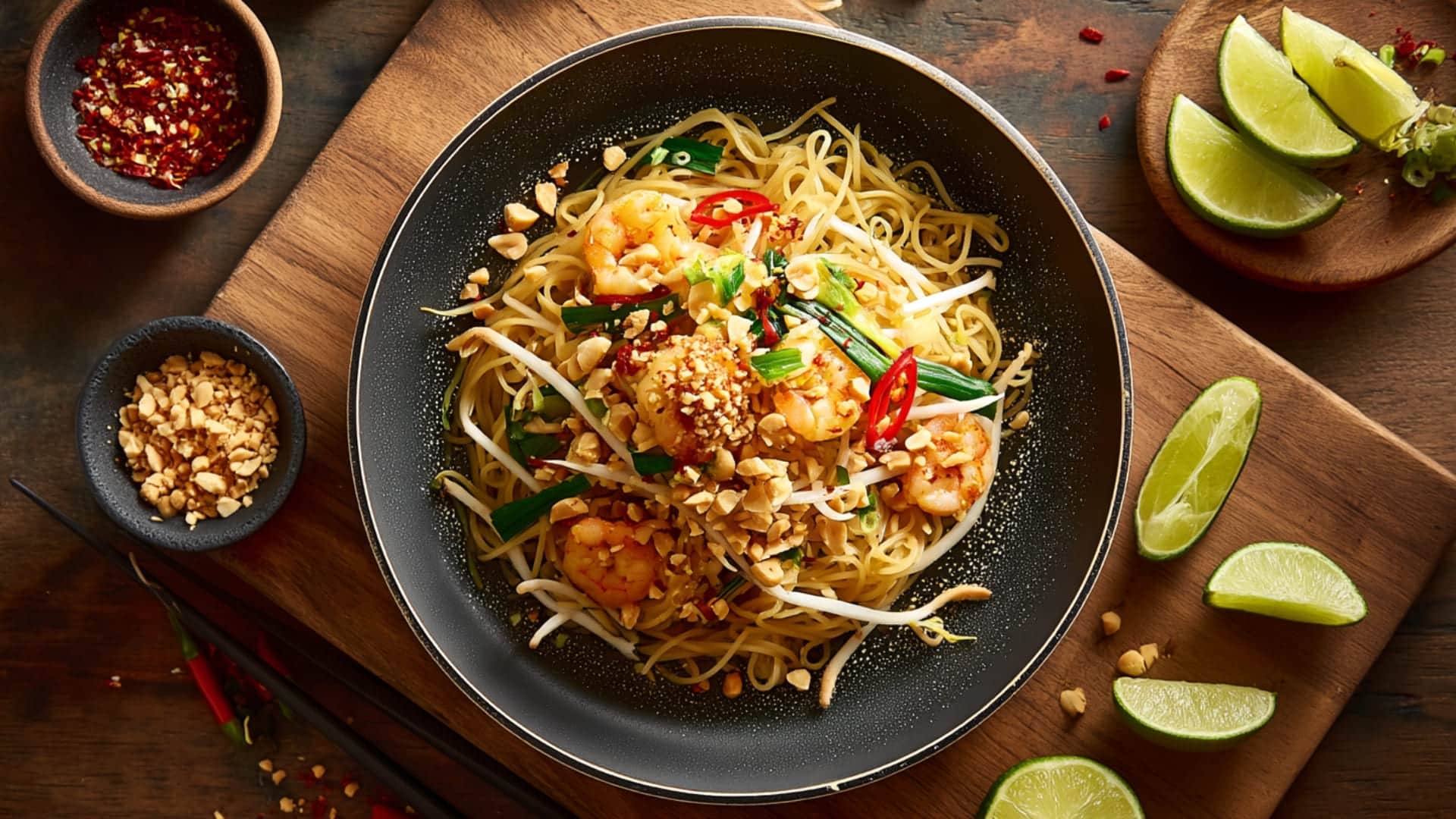
Place your finished Pad Thai on plates immediately while it’s still hot. Top each serving with fresh bean sprouts, crushed peanuts, and red chili flakes if you like spicy food. Squeeze fresh lime juice over the top just before eating.
This adds the perfect finishing touch to your homemade dish.
Is Pad Thai Ever Completely Gluten-Free?
Yes, Pad Thai can be completely gluten-free, but you need to be very careful about every ingredient and how it’s made.
The key is controlling the sauces, making sure the noodles are 100% rice-based, and avoiding cross-contamination during cooking.
Your best options are making it yourself at home or finding restaurants that specifically offer gluten-free menus. Some restaurants even have gluten-free certification, which means they follow strict rules to keep gluten out of their food.
When you’re mindful of these details, you can savor delicious Pad Thai without worrying about gluten. It just takes a little extra planning and asking the right questions.
Final Thoughts
So, is Pad Thai gluten-free? It can definitely be the case when you’re careful about ingredients and preparation.
By choosing the right noodles, using gluten-free sauces like tamari, and avoiding cross-contamination, you can enjoy this delicious dish safely.
Making Pad Thai at home gives you the most control, while asking detailed questions at restaurants helps you stay safe when eating out.
With these tips, you’ll never have to miss out on this popular Thai favorite again. Have you tried making gluten-free Pad Thai at home? Share your experience and favorite tips in the comments below!







